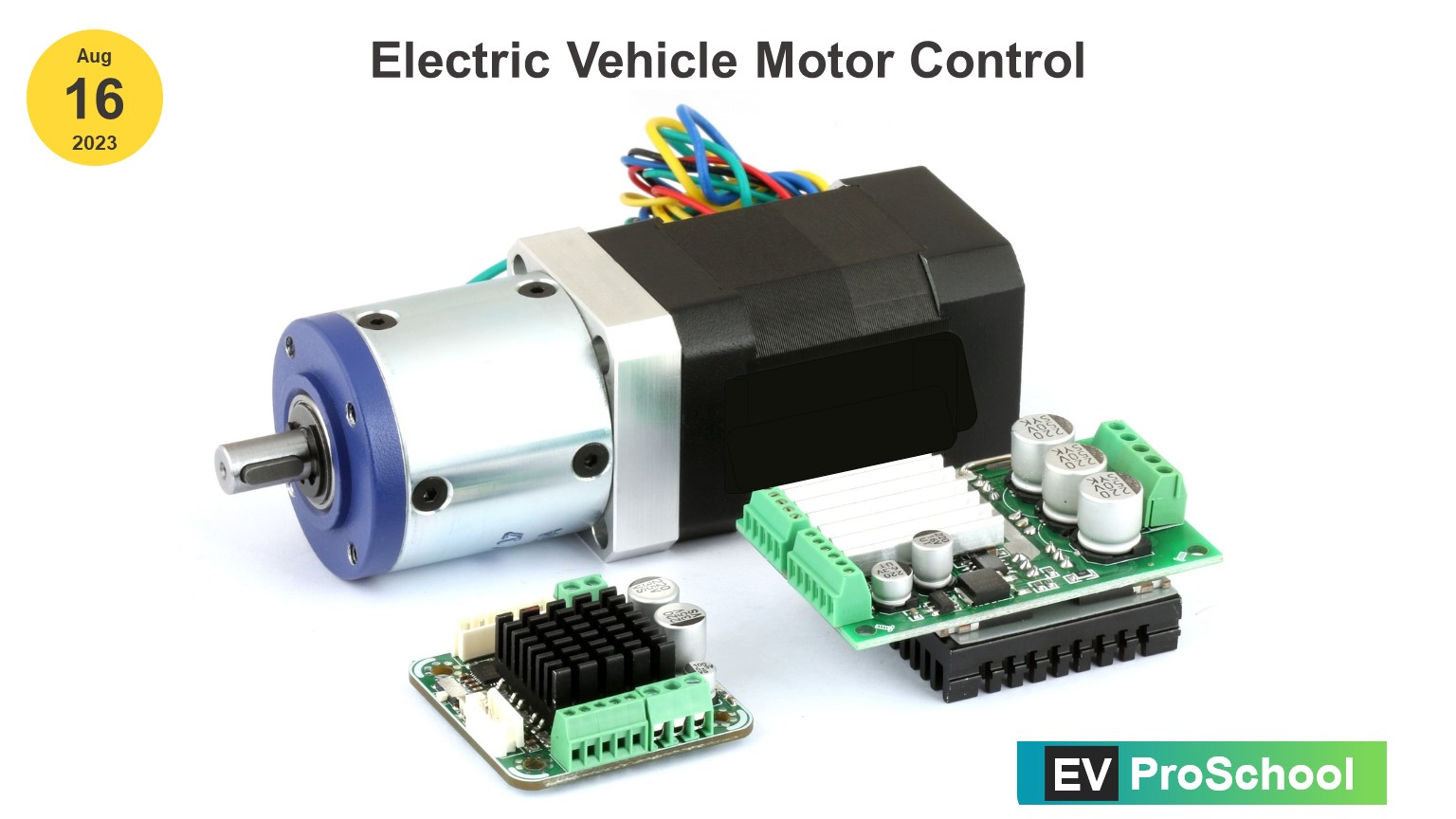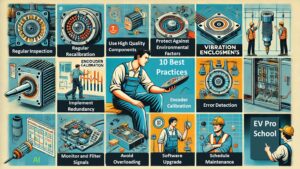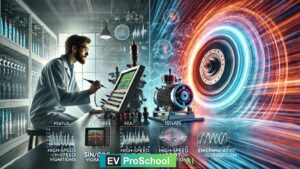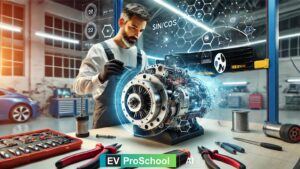As electric vehicles (EVs) continue to gain momentum as a sustainable and eco-friendly transportation solution, understanding the intricacies of their motor control mechanisms becomes essential. The efficient control of electric motors directly impacts an EV’s performance, energy consumption, and overall driving experience. In this blog post, we will explore the key motor control mechanisms used in electric vehicles, empowering EV enthusiasts and learners with the knowledge they need to make informed decisions and upskill in this exciting field.
1. Direct Current (DC) Motor Control:
DC motors are simple and widely used in various applications, including early electric vehicles. They operate using a direct current power source and are relatively straightforward to control.
Control Mechanism: The speed of a DC motor can be regulated by adjusting the voltage supplied to the motor. Lowering the voltage slows down the motor, while increasing it raises the speed. This control mechanism is often referred to as “armature voltage control.”
Advantages:
- Simplicity in control and implementation.
- Cost-effective for low to medium power applications.
- Reliable and durable with a long service life.
Applications:
- Early electric vehicles and small-scale EVs.
- Electric scooters and bikes.
- Some auxiliary systems in modern EVs.
2. Brushless Direct Current (BLDC) Motor Control:
Brushless DC motors have gained popularity in modern electric vehicles due to their efficiency and reliability. They eliminate the need for brushes, reducing wear and maintenance.
Control Mechanism: BLDC motors are controlled using electronic commutation, where the motor’s stator windings are energized in a specific sequence. Sensors or advanced algorithms detect the rotor position and apply the appropriate current to the stator windings for precise control of speed and torque.
Advantages:
- Higher efficiency and performance compared to brushed DC motors.
- Reduced maintenance requirements.
- Wide range of applications, from electric bikes to high-performance EVs.
Applications:
- Electric bicycles and scooters.
- Electric cars and buses.
- EV propulsion systems.
3. Induction Motor Control:
Induction motors, also known as asynchronous motors, are widely used in various industrial applications and some electric vehicles.
Control Mechanism: Induction motor control involves adjusting the frequency of the supplied alternating current (AC) to regulate the motor’s speed. This control mechanism is commonly known as “variable-frequency drive” or VFD.
Advantages:
- Robust and reliable with fewer mechanical components.
- Suitable for high-power applications due to its inherent design.
Applications:
- Some electric buses and trucks.
- Industrial machinery and conveyor systems.
- Auxiliary systems in EVs.
4. Permanent Magnet Synchronous Motor (PMSM) Control:
PMSM motors have permanent magnets embedded in the rotor, providing excellent power density and efficiency.
Control Mechanism: Similar to BLDC motors, PMSM motors are controlled using sensor feedback or advanced algorithms to accurately control the stator currents and achieve the desired speed and torque.
Advantages:
- High efficiency and power density.
- Precise control for smooth acceleration and deceleration.
- A common choice for modern electric vehicle propulsion.
Applications:
- Electric cars, including many Tesla models.
- Electric motorcycles and high-performance EVs.
- Hybrid electric vehicles (HEVs).
Conclusion:
As the world accelerates towards an electric future, knowledge of various motor control mechanisms is crucial for anyone interested in electric vehicles. From the simplicity of DC motor control to the sophistication of PMSM control, each mechanism offers unique benefits and applications. EV enthusiasts, engineers, and learners can benefit from understanding these technologies, helping them make informed decisions, upskill, and contribute to the exciting world of electric vehicles.
At EV PRO School, we are committed to providing valuable information and resources to empower learners in the electric vehicle domain. Whether you’re an aspiring EV enthusiast or a seasoned professional, staying informed and continuously learning about motor control mechanisms will enable you to actively participate in shaping the future of sustainable transportation.



